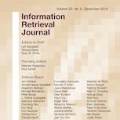Recently, neural networks have been successfully employed to improve upon state-of-the-art performance in ad-hoc retrieval tasks via machine-learned ranking functions. While neural retrieval models grow in complexity and impact, little is understood about their correspondence with well-studied IR principles. Recent work on interpretability in machine learning has provided tools and techniques to understand neural models in general, yet there has been little progress towards explaining ranking models. We investigate whether one can explain the behavior of neural ranking models in terms of their congruence with well understood principles of document ranking by using established theories from axiomatic IR. Axiomatic analysis of information retrieval models has formalized a set of constraints on ranking decisions that reasonable retrieval models should fulfill. We operationalize this axiomatic thinking to reproduce rankings based on combinations of elementary constraints. This allows us to investigate to what extent the ranking decisions of neural rankers can be explained in terms of retrieval axioms, and which axioms apply in which situations. Our experimental study considers a comprehensive set of axioms over several representative neural rankers. While the existing axioms can already explain the particularly confident ranking decisions rather well, future work should extend the axiom set to also cover the other still "unexplainable" neural IR rank decisions.
翻译:最近,神经网络被成功地用于通过机器学习的排序功能来改进临时检索任务中最先进的表现。 虽然神经检索模型在复杂性和影响力方面不断增长,但对于它们与研究周密的IR原则的对应性几乎没有什么了解。最近关于机器学习可解释性的工作提供了一般理解神经模型的工具和技术,但在解释排序模型方面进展甚微。我们调查是否可以解释神经排序模型的行为,从它们与人们所熟知的文件排序原则的一致性的角度来解释这些模型的行为。对信息检索模型的逻辑分析已经正式确定了一套对等级决定的限制,而合理检索模型应该满足这些决定。我们运用了这种理论思维来复制基于基本限制组合的排名。这使我们能够调查神经排级的排序决定在多大程度上可以用回收轴值来解释,在哪些情况下适用轴值。我们的实验研究认为,利用一些具有代表性的神经排位的既定理论,对信息检索模型进行了一套完整的轴值分析,从而正式确定了一套对等级决定的限制。我们运用了这一理论,以便根据基本限制的组合来复制排位。这使我们能够调查神经排位者的排序决定在多大程度上可以被解释,而现在的排序也能够解释其他的排序。




